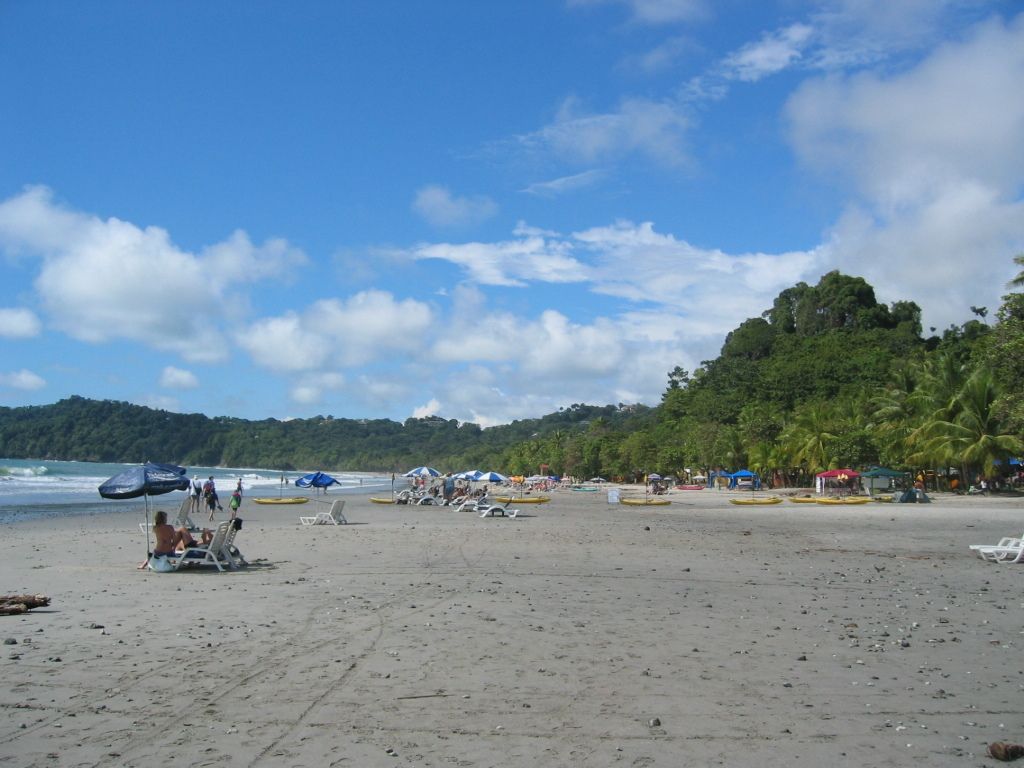High-speed trains will be on the move
With just a few years remaining before the launch of Russia's high-speed train service, the Moscow-St. Petersburg line is set to kick off on April 1, 2028.
Although work on the development of Russia's high-speed train service, including the creation of the needed rolling stock, started in the 70s of the last century (see "When Our Trains Would Go Fast," Expert No 28 for 2021), for various reasons it was never fully completed. Although Russia's "Sokol" lost to Germany's "Sapsan" back then, it was just one of the many steps on the way.
"Monocle" closely follows the development of Russia's high-speed train service, a key component of which is the hi-tech rolling stock. We had a chat with Alexander Misharin, Chairman of the Board of Directors of holding company "Sinara-Transport Machines" about the progress of its creation.
- In what stage is the project to create a high-speed train, and how is its design progressing?
- The design and construction of the high-speed train is being carried out by the Engineering Center for Railway Transport at the request of Russian Railways. The Center was established by two founders in 2019, one of which is one of Russian Railways' daughter companies and the holding company "Sinara-Transport Machines" (STM). In 2020, Moscow joined as another owner (AO "ICJT" belongs 30% to the government of Moscow, 60% to Russian Railways, and 10% to STM - "Monocle"). Last year, the technical project was defended.
Currently, jointly with Ural Locomotives (located in Verkhnyaya Pyshma, Sverdlovsk Oblast, part of STM, produces high-speed trains "Lastochka" and several models of freight electric locomotives - "Monocle"), the design phase is being developed, technologic blueprints are being created, and new facilities are being built on the factory site. So, today, the project is being implemented according to the approved schedule.
An important point - there is concrete work with suppliers. We are completing the finalization of contracts for the main components.
- Recently, a representative of the company said that a new train could start being assembled as early as next year.
- That's correct. Currently, a non-motorized wheelset is being tested, and its stationary tests will be completed by June. The motorized wheelset is being prepared for testing, and it will be delivered to the tests shortly. This year, the main components will be formed, and in the middle of next year, we will start assembling the train.
- Where do the tests take place? Does Ural Locomotives have its own test stand?
- No, the tests of the wheelset are conducted by the Scientific Research and Construction Technical Institute of Railway Rolling Stock, VNIIKTI. The strengh of the all components of the wheelset is determined there, including fatigue strength.
- What type of body will this train have - steel or aluminum?
- All high-speed trains have a lightweight body made of extruded aluminum and special panels. Ural Locomotives is a unique plant that possesses the technology s,,ewering such panels. It is the only one in Russia. This technology has been well-established and optimized by the factory: high-speed trains "Lev" and "Lastochka" have aluminum body panels of the cars. This was one of the reasons why Ural Locomotives was chosen as the manufacturer of the high-speed train. The majority of the technologies used by the factory successfully, and will be applied in the creation of the high-speed train: robotic welding, welding of the body, which, by the way, is being improved, and others.
The advantage of the factory is its personnel, who have a lot of experience in manufacturing trains. The pool of suppliers, who produce components for the "Lastochka" train and will participate in the production of the high-speed train, is also noteworthy.
- The maximum speed of the new train is planned to be 400 kilometers per hour, with an operating speed of 360. The "Lastochka" and "Lev" are only capable of speeds up to 160 kilometers per hour. It is clear that the requirements for the wheelset of a high-speed train differ significantly. What are the constructional differences, what new materials are being used?
- Of course, the construction of the wheelset for the high-speed train, although it is a logical development of the wheelset for the high-speed train, has several significant differences. First, the strength has been increased. This leads to more demanding requirements for steel grades and welding technologies. Second, the wheelset has additional structures, which, on the one hand, ensure rigidity, and on the other hand, provide smoothness of operation. Third, the components of the wheelset itself have been modified. For example, the engine has the same size as that of the high-speed train, but its power is almost twice as high. This requires different technical solutions and materials. And a host of additional components.
The high-speed electric train will consist of 8 cars, allowing for the possibility of linking two trains into a single formation. The total number of passengers will be 454 people. The cars will have four classes of service: first, business, comfort, and standard.
The maximum speed of the train is 400 km/h, with operating speed of 360 km/h. The planned travel time from Moscow to St. Petersburg along the specialized high-speed line is 2 hours and 15 minutes. The total length of the high-speed line is 679 km.
The total cost of the project, including the construction of the high-speed line and the production of 43 high-speed trains, is 2.349 trillion rubles. At present, this is the largest investment project in Russia. It is being implemented under the terms of a concession agreement. The concessionaire is the company "VKM Dve Stolitsy". The term of validity of the concession agreement is 40 years. The inauguration of the high-speed line VKM-1 Moscow-St. Petersburg is scheduled for April 1, 2028
- Is the steel for the wheelset domestic?
- Yes, almost all the construction and details of the high-speed train are made by Russian companies. Only premier suppliers are numerous, and I cannot even estimate, because each supplier has its own suppliers. That is, this is a large, very technologically advanced, scientific, and engineering project, which is being implemented in Russia for the first time.
- What about the electric motor, which is smaller but more powerful? Who designed it, and who will produce it?
- It was developed in the Engineering Center, all the technical requirements and specifications were defined during the design stage of the train. Its power is 630 kW. Currently, there are two Russian manufacturers. Ural Electrical Engines Plant in Chelyabinsk has already produced a prototype and will supply it for testing in the near future.
- Why are there two manufacturers? Is there not enough power output from one, or are you creating competition between them?
- In general, we strive to have two suppliers for the key components to reduce our risks. Because there are elements without which there would be no trains at all. If there is a lack of one element, there will simply be no trains.
- Are there two motors on a wheel or one?
- On each axle, there is a motor. Of the eight cars - four are motorized. 16 motors for the entire train.
- Is the power transfer from the motor to the axle via a reducer or directly?
- Through a reducer. This is a very important part with a fifth class precision finish.
- Will you manufacture it, or will you commission someone?
- Here, there are two options. One is to manufacture it ourselves, and the second is to commission someone else.
Without digital technologies, the project's design and development would be impossible. Because before any decisions are made in the technical project, digital modeling of practically every element is carried out.
- How have you addressed the issue of the power pickup, the transmission of electric energy from the catenary to the train? At high speeds, it is necessary to maintain mechanical contact between the pantograph and the catenary...
- With these tasks, we have succeeded thanks to two engineering solutions.
In general, if we speak of high-speed trains and especially their differences from ordinary high-speed trains, we need to pay attention to two factors. First is the train itself, which has higher parameters, allowing it to reach speeds of 400 kilometers per hour. Second, special infrastructure that allows you to achieve this speed. This infrastructure is more expensive to build, but cheaper to operate. That is, the operational costs in the future will be lower. This is a principal difference that is not always highlighted. The same is true for the contact network. The DC transmission line for high-speed trains, mark KS-400, was developed in the past, when work was being done on the VKM line Moscow-Kazan, and is currently being tested. This is a virtually non-serviceable catenary network. An electric traction collector is more flexible, elastic, and allows for power pickup. However, at high speeds, power pickup occurs with the formation of an electrical arc. The catenary is more rigid, its tension is approximately 70% higher than that of ordinary, and due to the high speed, there is no destruction of the catenary and the traction collector, but power pickup occurs as required for maximum speed at maximum load. The power of the VKM train is 10 megawatts, and in a two-train formation, this is 20 megawatts. For comparison, a 10 megawatt engine is the most powerful locomotive in freight operations.
- Doesn't the electrical arc have a high temperature? Won't the wire melt?
- Actually, it is thanks to the high speed that the wire does not melt. And when the speed is lower, mechanical contact occurs, and the arc disappears. These are complex electrical engineering processes, but they have been tested and now allow you to draw the necessary power, which is required for the maximum speed at maximum load.
- When will the train be ready for testing: if the road is still being built, where will it accelerate to 400 kilometers per hour?
- Today, a test program has been developed, according to which both the train and the infrastructure will be tested in several stages. The test of the train will take place in several steps. The first stage will be a factory test. The second stage will be testing on an existing infrastructure up to 250 kilometers per hour, the third stage will be testing on the section of the new line that is currently being built and is expected to be launched in 2027, from Krukovsky to Obukhov Station. On this section, both the infrastructure and the train will be tested and certified.
- The high-speed train project is currently in the implementation phase, with design and construction being carried out by the Engineering Center for Railway Transport. The Center collaborates with Ural Locomotives for the development of technologic blueprints, and new facilities are being built on the factory site.
- Alexander Misharin, Chairman of the Board of Directors of holding company "Sinara-Transport Machines", stated that the non-motorized wheelset is currently being tested, and its stationary tests will be completed by June. The motorized wheelset is being prepared for testing, and it will be delivered for tests shortly. The assembly of the new train is expected to begin next year.








